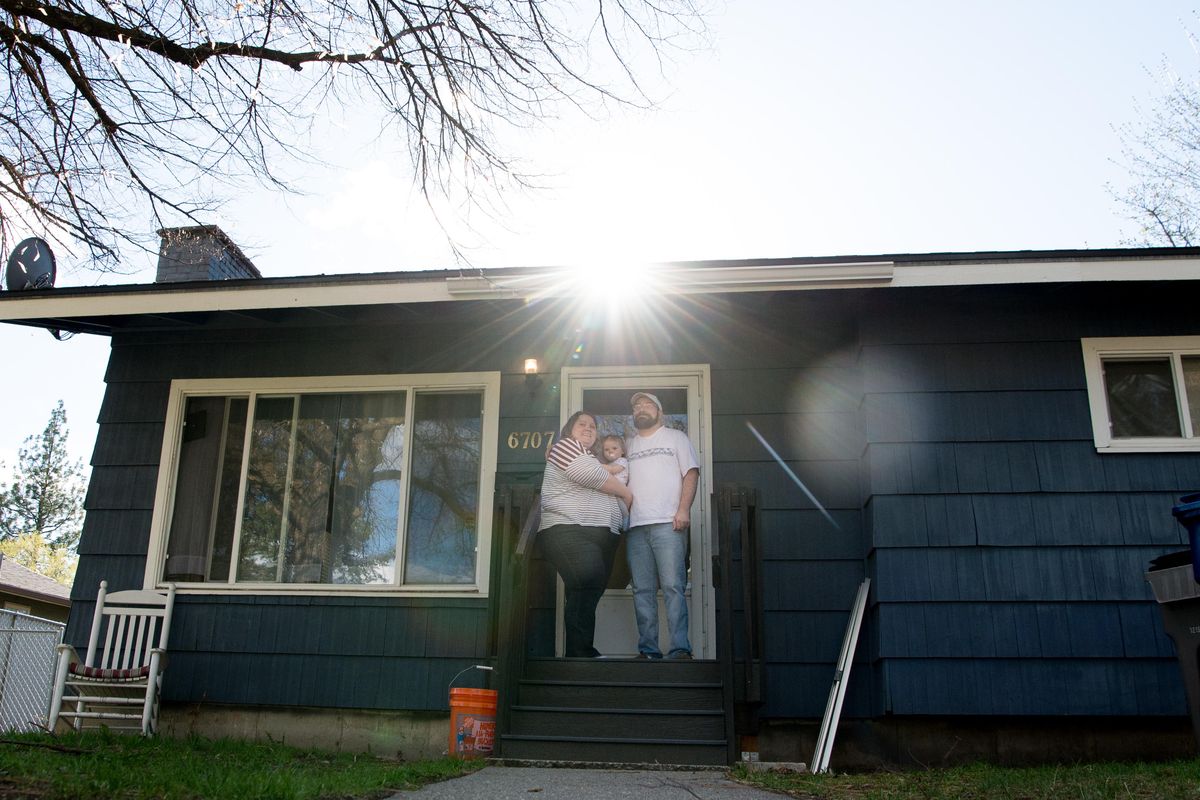First-time homebuyers met with few housing options in seller’s market; Spokane officials offer potential fixes

Rejection.
“We were looking at houses for months and probably put in close to two dozen offers,” said Micah Blake, who along with his wife, Katie, and sister-in-law Emily Clavel, found a three-bed, one-bath rancher north of Francis Avenue after months of searching. “We were outbid almost every time.”
“It can get discouraging for the buyers, and it can get discouraging for the Realtor, too,” Silbar said.
Engaged couple Emma Schmitt and John Kircher, both 19, had a similar experience when they decided to start married life owning rather than renting. They navigated the seller’s market with their Realtor, Kircher’s mother, Vicki.
“Every night after work, we were calling somebody and looking at two houses,” said Kircher, who eventually found a one-bed, one-bath home in the Hays Park area that had just been flipped.
Their success stories demonstrate determination, something that first-time homebuyers have had to show for years as affordable, starter home stock has lagged in Spokane County as it has across the nation. Just 21 homes were listed in March in Spokane County ranging from $100,000 to $200,000 in price, considered nationwide to be within the median price for first homes, according to data from Realtor.com.
Policymakers insist one of the easiest ways to solve the housing shortage is to loosen the state’s strict liability laws for construction of condominiums, which would allow developers to build units that fit within an affordable price range and allow owners to build equity they can later use to buy their first detached home. But when it comes to increasing that single-family home stock, potential solutions include opening up more real estate outside of the urban core for building and providing for denser construction near urbanized centers of far-flung neighborhoods.
Stuckart said allowing for those easing of standards near areas of the city identified in planning to be more walkable, urban centers would provide options for aging residents who are remaining in their single-family homes. When they do so, those houses aren’t available for purchase by younger buyers who are looking to break into ownership.
It’s causing downward pressure on the real estate market that both Realtors and lenders are noticing.
“We’re talking thousands of people now who don’t have an opportunity to move somewhere that would be affordable for them,” said Marianne Guenther Bornhoft, a broker-Realtor with Windermere-Spokane. “That housing stock is lost.”
“There seems to be heavier inventory on the $300,000 price point and up,” said Darren McNanny, director of real estate for STCU. “We’re pretty tight on the below-$300,000, so that’s a challenge.”
That’s led first-time buyers to compete fiercely for available properties in their price range, oftentimes giving up on some wishes in order to find a property, Guenther Bornhoft said.
“Some of the homes that generally would take longer to purchase are being snapped up by people saying, ‘I’m going to have to get in something,’” she said.
Potential buyers are also competing with investors who are hoping to flip a house in the seller’s market and make a tidy profit. Kircher said he and his fiancee ran into that problem multiple times.
“People that just have stacked up bank accounts, as soon as this kind of house comes on the market, they snatch it up,” he said.
Spokane County is working to ease the market pressure by advocating for larger housing density in areas on the urban fringes of its incorporated cities, Spokane County Commissioner Al French said. That’s done by expanding a boundary known as the urban growth area, revisions that often invite criticism from neighborhood and smart planning advocates concerned about sprawl.
“It has taken a lot of land that would otherwise be developable and drives up the price by creating an artificial sense of scarcity in the county,” French said of the efforts to keep expansion at bay.
City Councilwoman Candace Mumm, who has fought efforts to extend utility services beyond those boundaries, said expanding the growth area is not the right approach to address the housing shortage, siding more with her municipal counterpart Stuckart in arguing for more concentrated growth in the city’s urban centers.
“That’s not financially sustainable,” Mumm said. “It costs more to deliver services to people, it’s the citizens who pay for the roads and fire services or who pay for schools.”
But efforts to increase density in neighborhoods are also met with backlash, Stuckart said.
As an example, when developer Jim Frank proposed a Kendall Yards-like addition on Spokane’s South Hill, neighbors quickly raised concern about traffic, parking and crime.
For now, first-time homebuyers offer one piece of advice to those looking to get into one of the few affordable starter homes on the market: Cover your bases. Have a backup offer waiting, just in case an initial sale falls through. Blake said it was that backup offer that saved their family their current home, after 10 years of renting and five moves from property to property.
“A lot of the people looking at houses, they don’t put in a backup offer,” Blake said. “Somebody outbids you, and a lot of the people move on to the next house.”